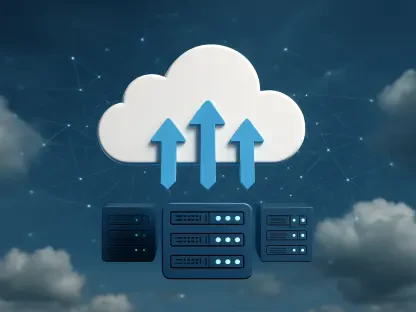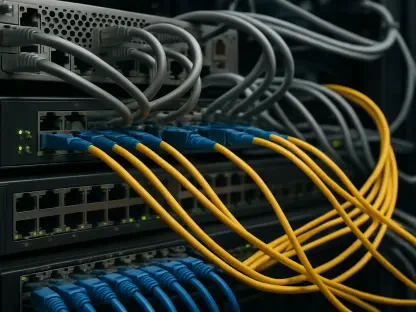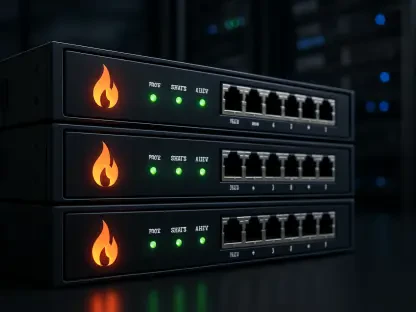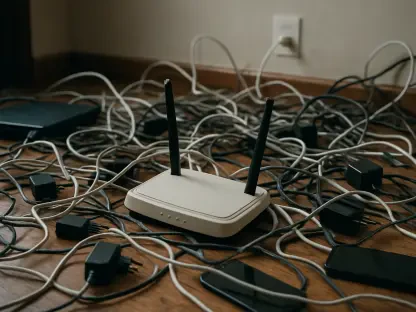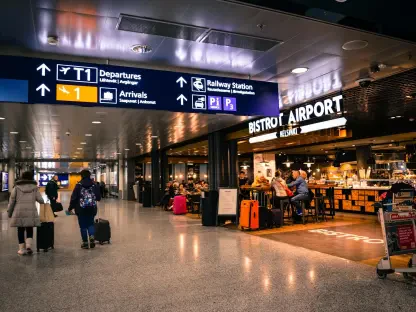Cleveland is witnessing a transformation in internet connectivity through a successful partnership between InCoax Networks, Tarana Wireless, and DigitalC. This initiative aims to address the city’s historically low internet connectivity rates by deploying high-speed broadband efficiently. The collaboration leverages innovative technologies such as InCoax’s MoCA Access and Tarana’s next-generation fixed wireless access (ngFWA) “G1” solution, which together offer fiber-class broadband performance without incurring the high costs and complexities associated with full fiber installations.
Bridging the Digital Divide
Enhancing Broadband Access Using Existing Infrastructure
A pivotal theme of this collaboration is the effective use of existing infrastructure to enhance broadband access. Traditional broadband deployment often requires substantial new construction, which drives up costs and complexity and can be particularly disruptive in urban settings. InCoax’s MoCA Access technology circumvents these challenges by utilizing existing in-building coaxial cabling to deliver high-speed internet services. This means that the infrastructure already in place in many buildings can be repurposed, significantly minimizing the need for new construction and making the deployment process faster and more efficient.
On the other hand, Tarana’s ngFWA technology tackles typical industry challenges such as radio interference and physical obstructions, issues that are particularly pronounced in dense urban areas. By leveraging advanced signal processing and innovative routing techniques, Tarana’s “G1” solution ensures reliable internet connections even in environments where traditional wireless solutions might falter. This dual approach—maximizing existing infrastructure with MoCA Access and overcoming environmental challenges with ngFWA—demonstrates a pragmatic and effective method for deploying broadband in cities like Cleveland.
Providing Cost-Effective Internet Solutions
Cost-effectiveness is another critical element of this initiative. The MoCA Access technology employed by InCoax Networks eliminates the need for expensive fiber installations, making high-speed internet more affordable for both providers and consumers. This is particularly important in underserved communities where economic barriers often prevent widespread adoption of high-speed internet services. By reducing installation costs, providers can offer more competitive pricing, thereby expanding access to broadband in economically disadvantaged areas.
Furthermore, the deployment strategy employed by DigitalC, a non-profit dedicated to digital inclusion, ensures that the solutions provided are not only affordable but also quick to install. DigitalC orchestrated the initiative with a clear focus on minimizing tenant disruption, which is vital in multi-dwelling units (MDUs) where any construction work can be highly intrusive. The technologies’ ability to work within existing frameworks means that residents experience less inconvenience, and the broadband services can be brought online much more quickly compared to traditional methods.
Impact on Multi-Dwelling Units (MDUs)
Efficient Deployment and Minimal Disruption
The impact of this collaboration on multi-dwelling units (MDUs) in Cleveland has been profound. MDUs typically present unique challenges for broadband deployment due to their density and structural complexities. However, the combined use of MoCA Access and Tarana’s ngFWA makes it feasible to provide these units with high-speed internet without the extensive disruptions usually associated with broadband installations. This efficient and less invasive deployment process is particularly beneficial in urban areas, where space and access are often limited.
Indeed, the deployment in Cleveland has been characterized by minimal new construction, effectively reducing the typical inconveniences that tenants might face. By capitalizing on the pre-existing coaxial cabling within buildings, InCoax’s MoCA Access technology ensures that the installation process is streamlined and swift, reducing the downtime and inconvenience typically associated with broadband upgrades. This not only makes the process more efficient but also fosters a more favorable reception among building residents and management.
Scalability and Broader Implications
The scalable nature of these technologies also means that their applications extend well beyond Cleveland. The successful rollout in MDUs serves as a proof of concept that can be replicated in other regions, both nationally and internationally. The methodologies used and the technologies adopted in this venture highlight how modern advancements can be harnessed to bridge the digital divide in other underserved communities. This sets a precedent for similar projects, showcasing an effective, practical approach to enhancing digital inclusion on a broader scale.
Moreover, the initiative underscores a broader trend in the growing necessity for high-speed, reliable broadband across various sectors of society. As more activities—ranging from education to business operations—shift online, the importance of stable and fast internet connections becomes increasingly paramount. This collaboration has demonstrated that it is possible to achieve these goals through innovative, cost-effective solutions rather than solely relying on traditional, and often more expensive, methods.
Transformative Approach to Broadband Deployment
Technological Advancements Driving Change
The collaboration between InCoax Networks, Tarana Wireless, and DigitalC showcases a transformative approach to broadband deployment. By utilizing MoCA Access and ngFWA technologies, the partnership has shown it is possible to offer fiber-class internet performance while significantly reducing the costs and complexities typically associated with such initiatives. This venture not only enhances internet access within Cleveland but also establishes a scalable model that other regions aiming to bridge the digital divide can follow.
The technologies used in this collaboration stand as a testament to how modern advancements can drive economic growth and opportunity in underserved communities. By eliminating the high costs of fiber installations, MoCA Access and ngFWA provide a feasible alternative that encourages wider adoption of high-speed internet. This, in turn, opens up new opportunities for residents, from better educational resources to more robust business environments, directly contributing to the community’s overall well-being.
Addressing Global Connectivity Challenges
Cleveland is experiencing a significant upgrade in its internet connectivity thanks to a fruitful collaboration between InCoax Networks, Tarana Wireless, and DigitalC. This ambitious project targets the city’s historically low internet access rates by rolling out high-speed broadband in a more efficient manner. The partnership capitalizes on cutting-edge technologies, including InCoax’s MoCA Access and Tarana’s groundbreaking next-generation fixed wireless access (ngFWA) “G1” solution. These technologies work in unison to deliver fiber-like broadband speeds and reliability without the extensive costs and logistical challenges that often come with full fiber installations.
The impact of this collaboration goes beyond just improving internet speeds; it is about bridging the digital divide that has long plagued Cleveland. By providing residents with faster and more reliable internet, the initiative aims to enhance educational opportunities, boost local businesses, and improve the overall quality of life. The strategic use of such advanced technologies not only makes it feasible but also sets a precedent for other cities facing similar connectivity issues.


